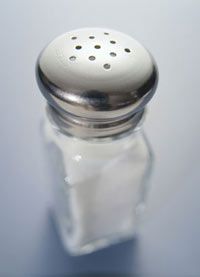Saturated, monounsaturated, trans and poly. Are you confused yet? You may be even if you've been keeping up on what types of fat to eat and which to shun. By now you've probably heard of stealthy trans-fats. If they're not on the "Nutrition Facts" panel yet, they're soon to arrive.
Trans-fats are sinister because like saturated fat, they raise total cholesterol and LDL, the "bad" cholesterol levels. Trans-fats lower levels of beneficial HDL cholesterol in the body. Also, consumption of trans-fats may inhibit the absorption of healthy fats that are necessary for the growth and functioning of vital organs. Though much has been made about the dangers of trans-fats, experts caution that those warnings shouldn't overshadow the potentially disastrous effects of saturated fats. Medical expert Dr. Andrea Pennington states that saturated fats "…increase your cholesterol levels, which can lead to clogged arteries, heart attacks, strokes and obesity."
Advertisement
Before we go any further, let's take a closer look at the different types of fats:
- Monounsaturated: These "good" fats are found mainly in plant sources, like nuts, avocados and olive, peanut and canola oils. They are liquid at room temperature.
- Polyunsaturated: These fats, which include the healthy omega-3 fatty acids, are also found in plant oils such as safflower, sunflower, corn, flaxseed and canola oils, as well as in seafood. Polyunsaturated fats are either liquid or soft at room temperature. Essential fatty acids - alpha-linolenic and linoleic acid - are also in the polyunsaturated group. These fats, which we need to get from the foods we eat, are necessary for the creation of cell walls and hormones in the body.
- Saturated: These fats are found mostly in animal products. Red meat, poultry, cheese, butter and other dairy products are the main sources. Some plant products like palm, coconut and palm kernel oil are also saturated. These fats are solid at room temperature.
- Trans-: This type of fat is formed when unsaturated vegetable oils are hydrogenated (or partially hydrogenated) to form solid, more stable fats. Hydrogen atoms are actually added to the oils. Trans-fats include margarine and shortening and are found in everything from crackers, cookies, doughnuts, frozen pie crusts, deep-fried foods and foods with chocolate coatings.
Advertisement


